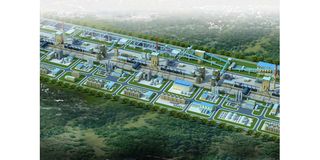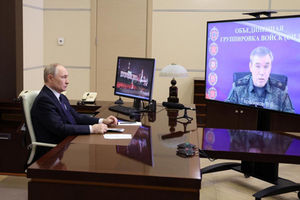How special economic zones can be game changers

What you need to know:
- A special economic zone is an area in a country subject to different, conducive financial regulations than other regions within the same country. Its main objective is to increase a country’s trade balance, employment, investment, job creation and effective administration.
Nairobi. From Morocco to Mauritius, African countries are creating special economic zones to accelerate and diversify economic growth.
According to the United Nations Conference on Trade and Development 2021 report, there are over 200 Special Economic Zones (SEZ) spread across 38 of 55 African countries. In addition, “at least 56 zones are under construction, and others are still at an early stage of development,” according to UNCTAD.
With the global drive to adopt green energy infrastructure, Africa now also has its first green Special Economic Zone.
The Atlantis SEZ in Cape Town South Africa is supporting GreenTech manufacturing and already features four large-scale investors operational in the Zone.
“We currently have a mix of local and international investors... an investor like GRI has injected 475 million rand (US$ 26.3 million) into the zone. The Spanish company manufactures steel wind towers for wind turbines,” acting CEO of the Atlantis SEZ, Matthew Cullinan said.
Other investors in Atlantis manufacture solar panels and other “green” products. The tech hub investments have already created more than 700 direct employment opportunities, with 5-year projections indicating a possible turnover in investments of close to R2.2 billion ($121.8 million).
A special economic zone is an area in a country subject to different, conducive financial regulations than other regions within the same country. Its main objective is to increase a country’s trade balance, employment, investment, job creation and effective administration.
But Cullinan says governments should consider the operationalisation of zones beyond offering incentives and tax relief.
“There is a need for governments to take part in developing reliable infrastructure and ensure there is policy certainty to facilitate investors to make long-term investment plans,” he said.
The highest numbers of SEZs in Africa can be found in Kenya, Nigeria, Ethiopia, and Egypt, with East Africa the region where most SEZs are located, according to the UNCTAD 2021 report.
However, Morocco, Mauritius, South Africa, Zanzibar, and Rwanda are all looking to further leverage SEZs to attain economic development.
The Financial Times FDI Global Free Zones of the Year 2020 report ranked Morocco’s Tanger Med Zones (a group of 8 free zones around the port of Tangier) as the top free zone in Africa and second in the world, while CFI named it the world’s top industrial free zone, in 2021. Currently, Tanger Med Zones boasts over 1100 operational businesses. Africa’s greatest automobile production plant, Renault Tanger Med, which has produced over 2 million vehicles, most for export, is one of the investments under the special zone.
According to Morocco’s Ministry of Industries and Commerce, Morocco in 2020 generated “turnover of MAD 72.18 billion ($7.25 billion) from auto exports to over 74 countries.” It seeks to increase this sector’s returns to US$22 billion by 2026, relying on the efficient operationalisation of special economic zones.
Kenya is leading Africa in the roll-out of special economic zones. Over 60 zones in Kenya have been either launched or earmarked. The most notable include the in-progress Konza Technopolis, a sustainable smart city, and Tatu City - which has already been designed and licensed.
Konza, located 70 kilometres from Nairobi, is already commanding global recognition after it beat Canada in a final round bid to host the International Association of Science Parks and Areas of Innovation, slated for 2024.
Phase 1 of Africa’s “Silicon Savannah” – Konza – announced more than 80 percent of the investment of parcels had already been taken up by different investors, as of June 2022.
In Nigeria, the Nigeria Export Processing Zones Authority data shows the country has 41 zones, 21 of which are operational.
Ethiopia and Rwanda have also amassed significant progress and success in leveraging special economic zones to cut down unemployment.
Ethiopia’s Industrial Parks Development Corporation estimates the sector employs more than 80,000 Ethiopians across 13 active industrial parks.
In the Kigali Special Economic Zone, more than 100 investors are manufacturing goods for export. Records of the Rwanda Development Board, the regulatory authority, show that 2021 exports from the zone were valued at $30 million.
Shem Otieno Joshua, a development economist and sub-Saharan African economy researcher based in Nairobi, said that policy and market gaps must be addressed to efficiently operationalise SEZs.
“There are basic yet significant base conditions that African economies will need to address going forward. Measurability indicators, legal and regulatory frameworks review, and investor support, is most important,” he explained.
However, Mr Joshua warns against an overreliance on foreign investments in Special Economic Zones while disregarding local investments, which can be more valuable over the long term.
“Since the initial start-up capital could be a challenge for a start, FDIs would be really helpful, but this should be in the short-term. In the broader scale, there is a need to expand intra-Africa investments so that revenues flow within the country or within the continent,” Mr Joshua noted.
“SEZ can be a game changer in solving labour utilisation gaps and labour quality upgrade in the continent but it will take strategic collaborations among economies within the continent to reap optimal returns from the zones,” he added.




